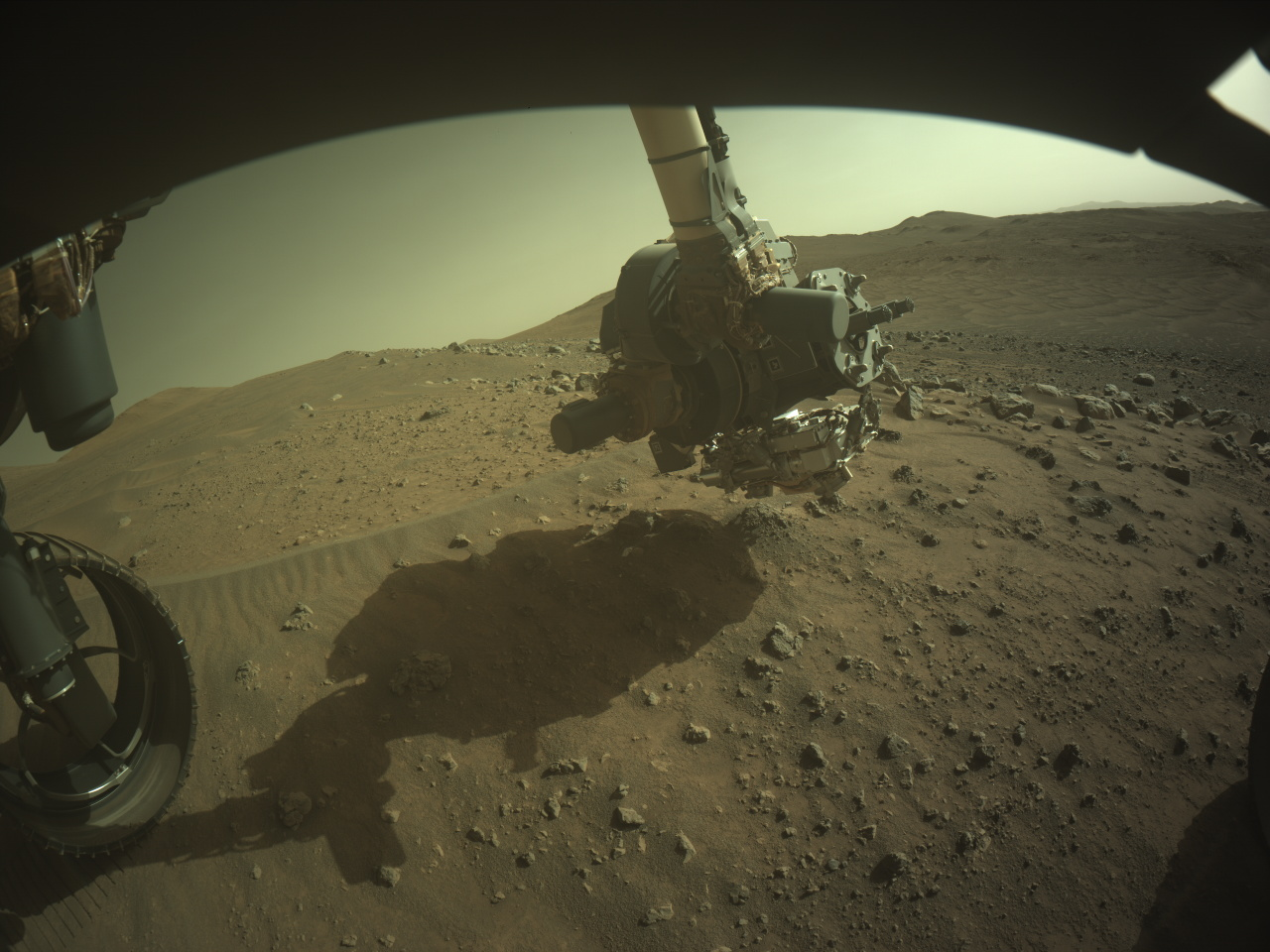Close-up

NASA's Perseverance Mars Rover
On the plains of Jezero, the secrets of Mars' past await us! Follow for the latest news, updates, pretty pics, and community discussion on NASA and the Jet Propulsion Laboratory's most ambitious mission to Mars!
Hahaha Beat me to it, Paul Hammond. 😄
I am reminded of this Mars Guy episode from last year, but there are significant differences here, even before you consider the difference in the two settings (river valley vs. crater rim). They're not going to abrade here - not this target specifically, anyway - but I see more than enough to investigate at this site for a few sols. And yet this friable, fractured material we're targeting is small enough to be hidden by the sandy ripples...
This mission. I have to pinch myself.
fractured material we’re targeting is small enough to be hidden by the sandy ripples…
Fully agreed, heaven knows whats under those ripples to the west. Saying that we could drive a bit further west without having issues with those ripples. I wonder if they'll venture that way 😀
They've even taken a night-time shot of this stuff, which... yeah, I really wish we could sample here. But the LED-lit shot is seriously full of detail:

Points of interest:
- White splotches - alteration minerals? (Sulfates?). Clustered in top centre of image.
- Dark grey brown material: dominant material here. Doesn't appear to be the famous purple coating material. Friable (crumbly), based on the HazCam images, but seems to be more resistant/better represented than the rest of the stuff in this rock. Features fine cracks/fractures/joints. Most of it is dull, but some appears to have a bit of lustre (shiny) - see upper right.
- Light grey zones: They feature "spots" - embedded tan regions, and smaller darker regions. Some of it is covered by white splotches, but some zones have none whatsoever. See top centre for some clear examples.
- Isolated tan zones: Smaller than the light grey zones, and almost entirely free of white splotches. Clustered nicely at right centre.
- Small dark elongated clasts, light brown and black.
- Small patches of purplish material: the usual coating material? Very little of it here. See lower left.
Now in a place like this, you always have to consider an impact origin: we're on the edge of a fair-sized impact crater and we've found plenty of material that was heavily modified/created by one or more serious impacts, including three of the four samples we've actually managed to bag on the rim. Impact breccia is complex stuff, a salad of ejected material that gets fused together and then solidifies into a chaotic and beautiful mass.
In this case, however, I really have to wonder. If this is impact breccia - even a breccia altered by long-lasting groundwater - I haven't seen a texture like it. The light grey zones and tan zones have fairly round outlines, rather than angular ones, which you would expect from shards of broken and ejected material. The distribution of the different zones (tan and grey zones tend to be grouped in small areas) doesn't seem random.
All in all, for me this is one of the most fascinating images of the entire mission, and that's saying something.
But the LED-lit shot is seriously full of detail:
Lovely detail, I see they also used the ACI. I'm assuming that they'll give it a touch of LIBS while they're here :)
The SHERLOC WATSON camera capturing the image, snapped by the HazCam

